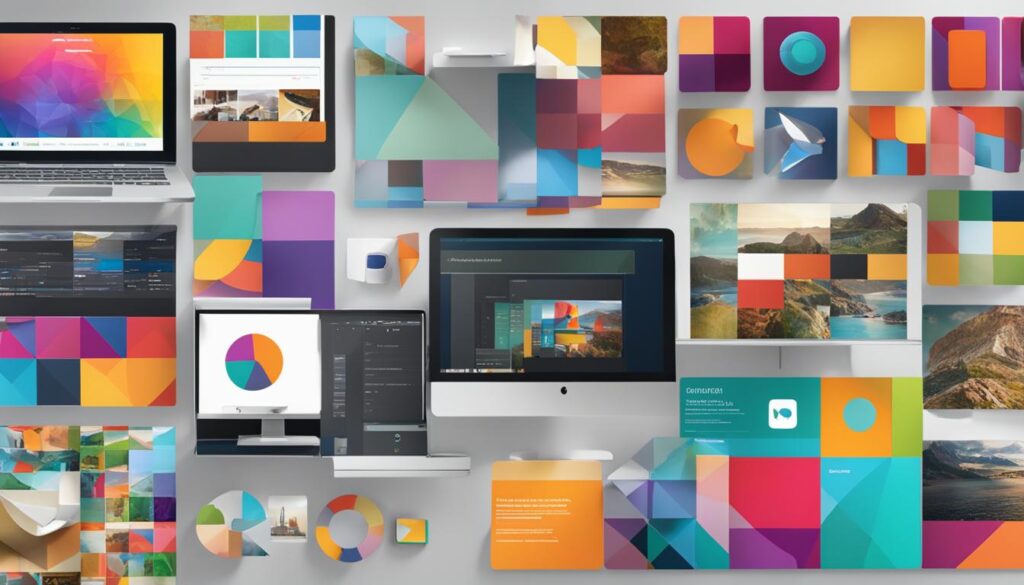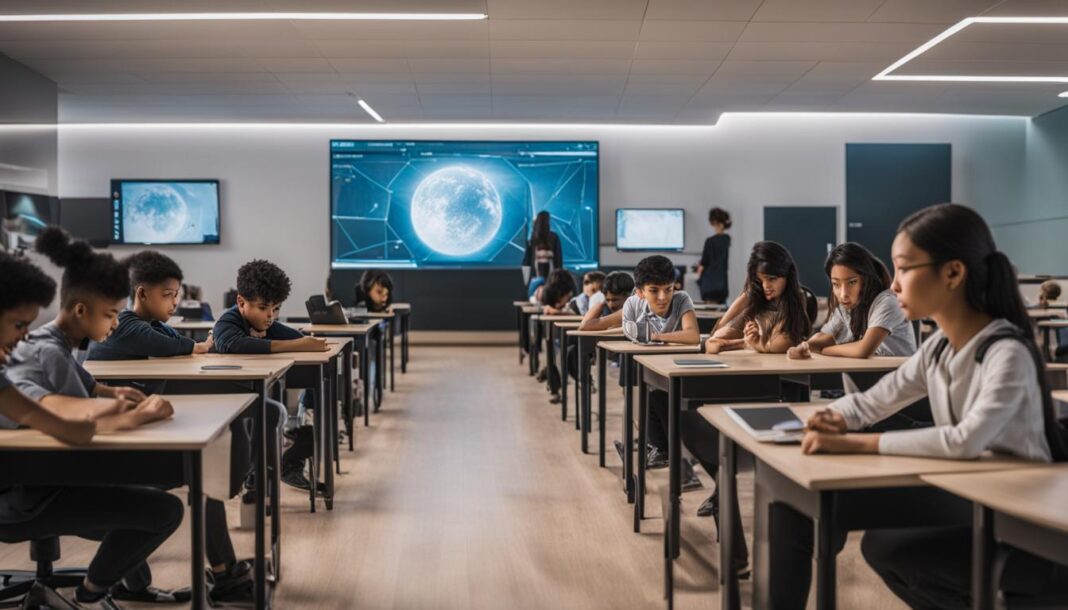Multimedia technology plays a crucial role in enhancing understanding and engagement in eLearning. It combines different media types, such as text, images, audio, video, and animations, to create impactful and interactive learning experiences. As access to quality education remains a challenge in many developing countries, the use of multimedia tools has proven to be an effective strategy for bridging the gap and improving learners’ performance. This systematic review examines various case studies, success factors, limiting factors, application areas, evaluation methodologies, and age groups targeted by multimedia tools in teaching and learning processes. The study concludes that the success of multimedia solutions is attributed to the technologies and components embedded in their development.
The Role of Multimedia in eLearning
Multimedia plays a vital role in eLearning by enhancing engagement, understanding, and retention of knowledge. It combines different media elements to present information in a visually appealing and interactive manner. Incorporating multimedia elements, such as videos, visuals, and animations, helps break down complex topics into manageable segments, making it easier for learners to comprehend and remember. The use of multimedia in eLearning also allows for personalized learning paths, adaptive learning, and real-world application, creating a more engaging and practical learning experience.
The benefits of multimedia in eLearning are numerous. It can turn abstract concepts into concrete content, helping learners grasp difficult ideas. Multimedia is also effective in presenting large volumes of information within a limited time, maximizing efficiency. By stimulating students’ interest in learning, multimedia fosters a positive learning environment where students are motivated and eager to explore. Additionally, multimedia provides teachers with valuable insights into students’ learning progress, allowing for targeted interventions and support.
To illustrate the benefits of multimedia in eLearning, consider the following example. A history lesson on World War II can incorporate a variety of multimedia elements, such as images, videos, and interactive maps. These elements can bring the subject to life, allowing students to visualize the events, understand the context, and engage in critical thinking. By using multimedia, educators can transform a traditional history lesson into an immersive learning experience that promotes active participation and deep understanding.
| Benefits of Multimedia in eLearning | Explanation |
|---|---|
| Enhanced Engagement | Multimedia elements capture learners’ attention and make the learning experience more enjoyable and interactive. |
| Improved Comprehension | By presenting information in different formats, multimedia aids in understanding complex concepts and promotes deeper learning. |
| Increased Retention | Visuals, audio, and interactive elements help learners retain information for longer periods of time. |
| Personalized Learning Paths | Multimedia allows for customization and adaptation to individual learning styles and preferences. |
| Real-World Application | By incorporating real-life examples and scenarios, multimedia facilitates the application of knowledge in practical situations. |
Essential Multimedia Tools for eLearning
Incorporating multimedia tools into eLearning courses can significantly enhance the learning experience for students. These tools allow educators to create engaging and interactive content that caters to different learning styles and preferences. By incorporating multimedia elements such as videos, images, audio, and animations, educators can present information in a visually appealing and interactive manner, making it easier for students to comprehend and retain knowledge.
Some essential multimedia tools for eLearning include:
- Video editing software: enables the creation and editing of high-quality videos that can be used to deliver instructional content, demonstrations, and simulations.
- Graphics design tools: allow educators to create visually appealing images, infographics, and illustrations that enhance the presentation of information.
- Presentation software: provides a platform for organizing and delivering multimedia presentations, incorporating slides, images, and videos.
- eLearning authoring tools: facilitate the development of interactive eLearning courses, allowing educators to incorporate multimedia elements and interactive activities.
- Interactive multimedia platforms: offer pre-built templates and tools for creating interactive multimedia content, such as quizzes, games, and interactive simulations.
By effectively utilizing these multimedia tools, educators can create dynamic and engaging eLearning courses that effectively communicate and reinforce key concepts. It is important to consider the design quality and coherence of multimedia elements to ensure an effective delivery of information and maximize learner engagement.
| Multimedia Tool | Key Features |
|---|---|
| Video editing software | Create and edit high-quality videos |
| Graphics design tools | Create visually appealing images and infographics |
| Presentation software | Deliver multimedia presentations with slides and videos |
| eLearning authoring tools | Create interactive eLearning courses with multimedia elements |
| Interactive multimedia platforms | Create interactive multimedia content, such as quizzes and simulations |
These multimedia tools provide educators with the means to incorporate engaging and interactive content into eLearning courses, promoting effective learning and knowledge retention. By leveraging these tools effectively, educators can create a dynamic and immersive learning experience for their students.
The effective incorporation of multimedia tools in eLearning requires educators to consider the learning objectives, target audience, and pedagogical content when selecting and utilizing these tools. By aligning multimedia elements with the learning objectives and content, educators can create a cohesive and impactful learning experience.
Designing Engaging eLearning with Multimedia
Designing engaging eLearning with multimedia involves the strategic use of various multimedia elements to captivate learners and create an immersive learning experience. By incorporating interactive elements, immersive visuals, and engaging narratives, educators can enhance learner engagement and promote effective learning.
Interactive elements, such as quizzes, decision-making scenarios, and drag-and-drop activities, encourage active participation and application of knowledge. These interactive components allow learners to actively engage with the content and test their understanding, promoting a deeper level of comprehension.
In addition to interactive elements, visuals play a crucial role in enhancing engagement and comprehension. Infographics and images help break down complex information into digestible segments, facilitating easier understanding and retention of knowledge. By incorporating visually appealing elements, educators can create a visually stimulating learning experience that captures learners’ attention and promotes effective learning.
| Benefits of Designing Engaging eLearning with Multimedia |
|---|
| Enhances learner engagement |
| Promotes active learning through interactive elements |
| Aids comprehension and retention of knowledge through visual elements |
| Captures learners’ attention and maintains interest |
Best Practices for Implementing Multimedia in eLearning
Implementing multimedia in eLearning requires careful planning and consideration of best practices. By following these guidelines, educators can create effective and engaging multimedia experiences for their learners. Here are some key best practices for implementing multimedia in eLearning:
1. Know your audience
Before implementing multimedia in your eLearning course, it is essential to understand your target audience and their learning preferences. Consider factors such as age, educational background, and technological proficiency. This knowledge will help you tailor your multimedia content to meet the specific needs and preferences of your learners.
2. Align multimedia with pedagogical content
Ensure that the multimedia components used in your eLearning courses align with the pedagogical content and learning objectives. Each multimedia element should have a clear purpose and enhance the understanding and retention of the subject matter. For example, if you are teaching a complex concept, consider using visualizations or animations to provide a clear and engaging representation.
3. Incorporate evaluation methodologies
Regularly evaluate the impact of multimedia in your eLearning courses to measure its effectiveness. Implement evaluation methodologies that align with your learning objectives, such as learner feedback surveys, assessments, or performance indicators. This data-driven approach will help you identify areas for improvement and optimize the learning experience for your students.
| Best Practices for Implementing Multimedia in eLearning |
|---|
| Know your audience |
| Align multimedia with pedagogical content |
| Incorporate evaluation methodologies |
By implementing these best practices, educators can effectively incorporate multimedia in their eLearning courses and create engaging and impactful learning experiences for their students.

Several successful case studies have demonstrated the effectiveness of incorporating multimedia in eLearning. These case studies showcase the positive impact of multimedia on learner engagement, comprehension, and retention of knowledge. For instance, a case study conducted in a language learning program found that the use of interactive multimedia platforms significantly increased learner engagement and facilitated language acquisition. The incorporation of multimedia elements such as videos, audio clips, and interactive exercises provided learners with an immersive and interactive language learning experience.
Another case study focused on science education, where the integration of multimedia elements such as animations, simulations, and visual representations improved students’ understanding and application of scientific concepts. By presenting complex information in a visually appealing and interactive manner, multimedia helped make abstract concepts more accessible and understandable for learners.
Furthermore, a case study in a professional development course for teachers highlighted the effectiveness of incorporating multimedia in eLearning to enhance educators’ pedagogical skills. The interactive multimedia components, such as video lectures, role-playing scenarios, and quizzes, provided teachers with practical examples and opportunities for reflection, leading to improved teaching strategies and student outcomes.
Case Study Summary
| Case Study | Focus Area | Multimedia Elements | Results |
|---|---|---|---|
| Language Learning Program | Language acquisition | Interactive multimedia platforms, videos, audio clips, interactive exercises | Increased learner engagement and facilitated language acquisition |
| Science Education | Understanding scientific concepts | Multimedia elements such as animations, simulations, visual representations | Improved understanding and application of scientific concepts |
| Professional Development Course | Teacher pedagogy | Video lectures, role-playing scenarios, quizzes | Enhanced teaching strategies and student outcomes |
Future Trends in Multimedia for eLearning
Multimedia technology in eLearning is constantly evolving, and several future trends are expected to shape its development. These trends will further enhance the potential of multimedia in online education, creating more immersive and engaging learning experiences. The following are some of the key future trends in multimedia for eLearning:
1. Virtual and Augmented Reality
Virtual and augmented reality technologies are becoming more accessible and affordable, making them highly promising for eLearning. These technologies can create immersive learning environments where learners can interact with virtual objects and scenarios. By simulating real-world experiences, virtual and augmented reality can enhance understanding, engagement, and retention of knowledge. These technologies have the potential to revolutionize eLearning by providing learners with hands-on experiences and practical applications.
2. Artificial Intelligence and Personalization
Artificial intelligence (AI) is increasingly being integrated into eLearning platforms to personalize learning paths for individual learners. AI algorithms analyze learner data and behaviors to identify strengths, weaknesses, and preferences, allowing for tailored learning experiences. Personalized eLearning enables learners to focus on areas that need improvement, ensuring a more efficient and effective learning process. With further advancements in AI, eLearning platforms will be able to provide adaptive and personalized recommendations, assessments, and feedback.
3. Gamification and Interactive Learning
Gamification elements, such as badges, leaderboards, and rewards, are being incorporated into eLearning to enhance motivation and engagement. Gamified eLearning experiences create a sense of challenge and competition, making the learning process more enjoyable and effective. Interactive learning activities, such as simulations, scenario-based decision-making, and gamified quizzes, encourage active participation and application of knowledge. These elements promote deeper understanding and long-term retention of information, making eLearning more interactive and engaging.
| Trends | Benefits |
|---|---|
| Virtual and Augmented Reality | – Creates immersive learning environments – Enhances understanding and retention |
| Artificial Intelligence and Personalization | – Tailors learning paths to individual learners – Provides personalized recommendations and feedback |
| Gamification and Interactive Learning | – Enhances motivation and engagement – Encourages active participation and application of knowledge |
These future trends in multimedia for eLearning hold great potential for revolutionizing the way education is delivered and experienced. By leveraging virtual and augmented reality, artificial intelligence, and gamification, eLearning can become more immersive, personalized, and interactive. As technology continues to advance, educators and eLearning platforms need to adapt and embrace these trends to provide impactful and effective learning experiences for learners around the world.
Tips for Effective Multimedia Design in eLearning
When incorporating multimedia in eLearning, effective design principles play a crucial role in enhancing the learning experience. Here are some tips for creating engaging and visually appealing eLearning courses:
- Use high-quality visuals and audio: Incorporate clear and visually pleasing images, infographics, and videos to support the content. High-quality audio ensures clear communication and enhances the learner’s experience.
- Incorporate appropriate animations and transitions: Use animations and transitions to guide learners’ attention and emphasize key points. However, avoid overusing animations, as they can be distracting.
- Ensure a consistent design theme: Maintain a consistent design theme throughout the course to provide a cohesive learning experience. Use consistent colors, fonts, and styles to create a visually appealing and professional look.
- Optimize multimedia elements for different devices: Consider the different screen sizes and devices that learners may use. Ensure that multimedia elements are responsive and accessible, providing an optimal viewing experience across devices.
Additionally, it is essential to consider the accessibility of multimedia content. Provide closed captions for videos to accommodate learners with hearing impairments, and include alternative text for images to make the content accessible to visually impaired learners.
By following these tips, educators can create visually engaging eLearning courses that maximize the impact of multimedia in the learning process.
Table: Multimedia Design Principles
| Design Principle | Description |
|---|---|
| Visual Appeal | Create visually appealing multimedia elements that capture learners’ attention and enhance engagement. |
| Coherence | Ensure that the multimedia elements align with the content and learning objectives, providing a cohesive learning experience. |
| Interactivity | Incorporate interactive elements, such as quizzes and interactive simulations, to encourage active participation and application of knowledge. |
| Consistency | Maintain a consistent design theme throughout the course, using consistent colors, fonts, and styles. |
| Accessibility | Make multimedia content accessible by providing closed captions for videos and alternative text for images. |
The Impact of Multimedia in eLearning: Evaluating Effectiveness and Methodologies
The implementation of multimedia in eLearning has revolutionized the way education is delivered and consumed. However, it is crucial to evaluate the impact of multimedia in eLearning to ensure its effectiveness and identify areas for improvement. Evaluation methodologies provide valuable insights into learner engagement, comprehension, and retention, helping educators make data-driven decisions to enhance the learning experience.
When evaluating the impact of multimedia in eLearning, a combination of qualitative and quantitative measures can be employed. Qualitative methods, such as learner feedback surveys and focus groups, offer subjective insights into learners’ experiences and perceptions. These methods allow educators to gather valuable feedback on the effectiveness of multimedia components and identify areas where improvements can be made.
On the other hand, quantitative methods, including assessments, quizzes, and performance indicators, provide objective measures of learner progress and achievement. These methods help gauge the impact of multimedia on learners’ comprehension and retention of knowledge, allowing educators to track learning outcomes and adjust their instructional strategies accordingly.
| Evaluation Methodologies for Multimedia in eLearning | Advantages | Disadvantages |
|---|---|---|
| Qualitative Methods (Learner Feedback Surveys, Focus Groups) | Provides subjective insights into learner experiences and perceptions | Subjective nature of data may be influenced by bias and personal opinions |
| Quantitative Methods (Assessments, Quizzes, Performance Indicators) | Offers objective measures of learner progress and achievement | May not capture the complete learning experience and individual learning preferences |
By utilizing both qualitative and quantitative evaluation methodologies, educators can gain a comprehensive understanding of the impact of multimedia in eLearning. This holistic approach enables them to identify strengths and weaknesses in their instructional design and optimize the use of multimedia components to enhance learning outcomes.
Conclusion
In conclusion, the effective use of multimedia in eLearning has proven to be a game-changer in the field of education. By incorporating various multimedia elements such as videos, visuals, and animations, educators can create engaging and interactive learning experiences that enhance understanding and retention of knowledge.
Implementing multimedia in eLearning requires careful planning and adherence to best practices. Educators should consider the target audience, align multimedia components with the content, and employ appropriate evaluation methodologies. By following these guidelines, they can ensure that the multimedia content is relevant, engaging, and enhances the overall learning experience.
Evaluating the impact of multimedia in eLearning is crucial for continuous improvement. Through qualitative and quantitative measures, educators can assess learner engagement, comprehension, and retention. This data-driven approach helps identify areas for enhancement and enables educators to optimize the learning experience.
As technology advances, the future of multimedia in eLearning looks promising. Emerging trends, such as virtual and augmented reality, artificial intelligence, and gamification, will further revolutionize the field. By staying informed and adopting new technologies and techniques, educators can unlock the full potential of multimedia in eLearning and provide impactful learning experiences for their students.



